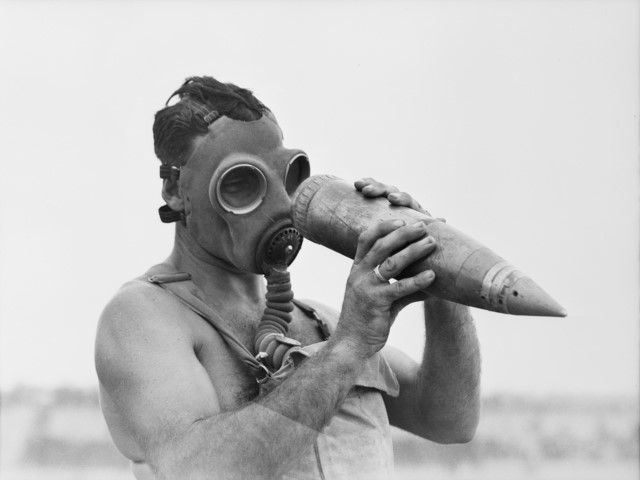Deutsch
Rechtsberatung in Fragen des Verbotes chemischer und biologischer Waffen in den 1970er Jahren
Abrüstungsfragen stehen im Herzen des modernen Völkerrechts. So befasste sich nicht nur bereits die allererste Resolution der UN-Generalversammlung mit der Notwendigkeit der (nuklearen) Abrüstung, auch das erste der sechs ständigen Komitees der UN-Generalversammlung ist für Abrüstungsfragen zuständig. Und schon vor Gründung der Vereinten Nationen waren Abkommen zur Begrenzung des Einsatzes bestimmter Waffen und Kampfmethoden im Krieg ein zentraler Motor des Völkerrechts.[1]
Ein Jahrzehnt der Abrüstung nach einem Jahrzehnt der regionalen Kriege
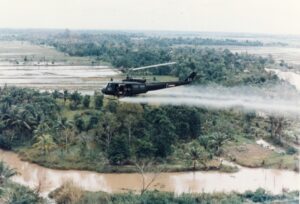
Chemische Kriegsführung. Die US Army versprüht das Entlaubungsmittel „Agent Orange“ im Vientamkrieg 1963[2]
Geprägt durch eine Vielzahl regionaler Konflikte wie beispielsweise in Algerien, Vietnam, Korea oder dem Nahen Osten war der im Zeitraum Ende der 1960er, Anfang der 1970er Jahre ein entscheidender Moment internationaler Abrüstungsbemühungen. Im Fokus standen damals neben konventionellen Waffen insbesondere Massenvernichtungswaffen (auch ABC-Waffen genannt).
Im Jahre 1968 wurde der Nichtverbreitungsvertrag (NPT) geschlossen, der die nukleare Aufrüstung maßgeblich aufhielt und mit seinem Art. VI eine Verpflichtung aller Staaten enthält, nicht nur Gespräche bezüglicher nuklearer Abrüstung einzugehen, sondern das Ziel eines Vertrages zur allgemeinen und vollständigen Abrüstung sämtlicher Waffen enthält. Auch das bilaterale nukleare Wettrüsten zwischen den USA und der Sowjetunion wurde durch das SALT I Abkommen sowie den ABM-Vertrag jeweils ab 1972 begrenzt.
Mit dem Durchbruch des NPT im Rücken sowie der breiten Unterstützung der Konferenz des Abrüstungskomitees, eingesetzt durch die UN-Generalversammlung, gab es ein Momentum, das Thema der biologischen B und chemischen C Waffen ebenfalls völkerrechtlich verbindlich anzugehen. Unterstützt wurden diese Bestrebungen durch einen Bericht des UN-Generalsekretärs Sithu U Thant über „Chemische und bakteriologische (biologische) Waffen und die Auswirkungen ihrer Verwendung“[3], der auf mehr als 100 Seiten die weitreichenden Konsequenzen des Einsatzes solcher Waffen darstellt. Zum Kontext der Diskussion gehörten Vorwürfe der Verwendung von bakteriologischen Kampfmitteln gegen Soldaten im Koreakonflikt seitens der Vereinigten Staaten zu Beginn der 1950er Jahre, aber auch die im Vietnamkrieg während der gesamten 1960er Jahre verwendeten, für Mensch und Natur verheerenden Waffen (z.B. Agent Orange). Die Skandalisierung des Vietnamkriegs in der öffentlichen Meinung und ein aufkommendes Umweltbewusstsein taten ihr übriges.
Das MPIL als Rechtsberater für die bundesdeutsche Beobachtermission bei den Vereinten Nationen
Als Reaktion auf U Thants Bericht, flankiert durch den Bericht des Ersten Komitees,[4] trat im Jahr 1970 eine internationale Kommission zusammen, die sich mit zentralen Fragen biologischer und chemischer Waffen beschäftigen sollte. An dieser nahm auch die Bundesrepublik Deutschland teil, auch wenn sie zu diesem Zeitpunkt noch kein Mitglied der Vereinten Nationen war. Bis zu ihrem UN-Beitritt 1973 war die Bundesrepublik lediglich im Rahmen einer Beobachtermission tätig, wobei wenn dieser Status sie nicht daran hinderte, sehr aktiv aufzutreten. Um an der Abrüstungskommission informiert teilnehmen zu können, bedurfte das Auswärtige Amt völkerrechtliche Expertise. Daher wurde der damalige MPIL-Direktor Hermann Mosler am 2. Februar 1970 vom damaligen Leiter der Abteilung Völkerrecht und späteren Leiter der Rechtsabteilung des Ministeriums – Dedo von Schenck – brieflich um die Erstellung eines Gutachtens gebeten.
Zwei Fragen sollte das Gutachten beantworten: Zum einen sollte geklärt werden, ob der Inhalt des Genfer Gaskriegsprotokolls aus dem Jahre 1925 Bestandteil des allgemeinen Völkerrechts sei. Zum anderen interessierte das Auswärtige Amt, ob bestimmte Mittel (Tränengas, Psycho-Kampfstoffe, Entlaubungsmittel und Napalm[5]) unter ein Verbot aus dem Protokoll fallen würden.
Zunächst fällt bei der Fragestellung auf, dass sie die Formulierung „allgemeines Völkerrecht“ verwendet. Aus heutiger Sicht ist das Gaskriegsprotokoll als völkerrechtlicher Vertrag selbstverständlich Teil des allgemeinen Völkerrechts. Die von Dedo von Schenck verwendete Formulierung erinnert allerdings an Art. 25 GG, welcher von den „allgemeinen Regeln des Völkerrechts“ spricht. Diese grundgesetzliche Formulierung wird – und wurde schon damals – sowohl vom BVerfG[6] als auch nach staatsrechtlicher herrschender Meinung [7] als Synonym für Völkergewohnheitsrecht verstanden.
Michael Bothe und das Rechtsgutachten Nr. 178
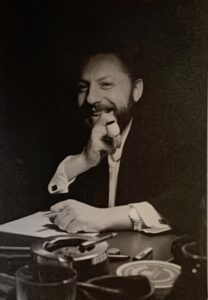
Michael Bothe als Referent am Institut in den 1970ern[8]
In diesem Sinne verstand auch Michael Bothe die Frage, welcher sich zu dieser Zeit am Institut habilitierte und von Hermann Mosler beauftragt wurde, das Gutachten zu erstellen. Michael Bothe arbeitete von 1964 bis 1979 als wissenschaftlicher Mitarbeiter und Referent am Institut, wo er sich unter anderem mit Fragen des humanitären Völkerrechts und Rüstungskontrollrecht beschäftigte.
Auffällig ist die Logik hinter der Fragestellung des Gutachtens. Zunächst wurde gefragt, ob ein Vertrag selbst Teil des Gewohnheitsrechts sei. Anschließend wurde gefragt, ob bestimmte Mittel unter den Vertrag fallen würden. Die vom Auswärtigen Amt verfolgte Logik lag also darin zu sagen, Stoff X fällt unter das Gaskriegsprotokoll, das Gaskriegsprotokoll ist Gewohnheitsrecht, also ist der Einsatz von Stoff X völkergewohnheitsrechtlich verboten. Diese Logik demontierte Michael Bothe bereits zu Beginn des materiellen Teils seines Gutachtens. Völkergewohnheitsrecht kann sich unabhängig von Vertragsrecht bilden. Auch der Inhalt eines gewohnheitsrechtlichen Verbots, auch wenn sich dieses parallel zu Vertragsrecht entwickelte und durch dieses katalysiert wurde, kann sich von diesem durchaus unterscheiden. Daher nimmt Bothe den dogmatisch sauberen Weg und fragt zunächst, ob der Einsatz eines spezifischen Stoffes gewohnheitsrechtlich verboten sei, um dann im Einzelnen die Tragweite eines solchen Verbots zu analysieren.
Systematisch arbeitet er das Vorliegen der beiden konstitutiven Elemente von Gewohnheitsrecht, der opinio iuris und der consuetudo (Staatenpraxis), heraus. Er kommt zu dem Schluss, dass das Gaskriegsprotokoll Bestandteil des Völkergewohnheitsrechts ist. Bei den jeweils angefragten Stoffen kommt er zu gemischten Ergebnissen: Napalm als Brandwaffe sei von keinem Verbot erfasst, was sich insbesondere an einer fehlenden Praxis aufgrund des massiven Einsatzes im Zweiten Weltkrieg zeige. Die übrigen Stoffe würden unter das Gaskriegsprotokoll fallen und seien daher vertraglich verboten. Interessanterweise lehnt er aber ein gewohnheitsrechtliches Verbot von Entlaubungsmitteln aufgrund des Widerstandes der Vereinigten Staaten, die dieses massiv in Vietnam einsetzten, ab. Nach heutiger Terminologie würde man diese als persistant objector bezeichnen.
Michael Bothe arbeitete sehr intensiv an dem Gutachten und stellte im September 1970 eine vorläufige Fassung fertig. Während das Gutachten selbst vierzig Seiten umfasste, folgten weitere knapp 200 Seiten Anhang, bestehend aus Analysen zu Einzelfragen und dem Abdruck von Vertragstexten sowie Protokollen – sichtbar ein Ergebnis harter juristischer und dokumentarischer Kärrnerarbeit. Die als Buch publizierte Langfassung wurde als wichtiger Beitrag für eine seit einem halben Jahrhundert bestehenden Diskussion über den Einsatz solcher Waffen gesehen, wobei insbesondere seine differenzierte Analyse des Vertrags- und Gewohnheitsrechts hervorgehoben wurde.[9] Die Übersendung des Gutachtens an das Auswärtige Amt übernahm Rudolf Bernhardt, der im selben Jahr als Direktor neu ans Institut berufen worden war. Nunmehr bestand das Direktorium mit Mosler und Bernhardt aus zwei Personen – eine Neuheit in der zu diesem Zeitpunkt knapp fünfzigjährigen Geschichte des Instituts. In der Korrespondenz zwischen MPIL und Auswärtigen Amt betonte das Auswärtige Amt regelmäßig die guten Beziehungen zwischen dem Völkerrechtsreferat des AA und dem Institut. Diese guten Beziehungen zeigen sich in der Korrespondenz insbesondere auch daran, dass Rudolf Bernhardt, bereits seit 1954 dem Institut verbunden, und der ihm offenbar schon lange bekannte Dedo von Schenck die sehr persönliche Grußformel „sehr verehrter, lieber Herr“ verwendeten. Noch heute werden diese besonderen Verbindungen gepflegt, etwa in den jährlich stattfindenden gemeinsamen Workshops, in denen Mitarbeitende des Auswärtigen Amts ein völkerrechtliches Thema intensiv mit Forschenden aus dem Institut diskutieren, oder der Tatsache, dass die geschäftsführende Direktorin Anne Peters Deutschland im Auftrag des Auswärtigen Amtes vor dem Internationalen Gerichtshof vertrat.
Was danach persönlich geschah
Das Gutachten lag nun in den Händen der Auftraggeber. Doch als Wissenschaftler ließ es sich Michael Bothe nicht nehmen, die umfangreiche Untersuchung, in die er mehr als ein halbes Jahr Arbeit investiert hatte, auch wissenschaftlich zu verwenden. Er arbeitete sein Gutachten, parallel zu seiner nicht weniger umfangreichen Habilitationsschrift, zu einem Buch aus und veröffentlichte dieses 1973 in der institutseigenen Reihe der Beiträge zum ausländischen öffentlichen Recht und Völkerrecht.[10] Wird diese Schriftenreihe heute aufgrund der Farbe der Einbände häufig einfach als Schwarze Reihe bezeichnet wird, so war Bothes Studie „Das völkerrechtliche Verbot des Einsatzes chemischer und bakteriologischer Waffen“ der letzte Band der Reihe, der noch mit einem grünen Einband erschien. Michael Bothe wurde 1974 an der Universität Heidelberg habilitiert und blieb bis zu seiner Berufung als ordentlicher Professor an die Universität Hannover 1979 am Institut, dem er weiterhin verbunden ist. Von 1983 an war er Professor in Frankfurt am Main, wo er 2003 emeritiert wurde. Weiterhin war er Teil der deutschen Delegation bei den Verhandlungen über die Zusatzprotokolle der Genfer Konventionen.[11] Heute lebt er in Bensheim.
Was danach völkerrechtlich geschah
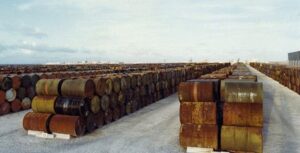
Fässer mit „Agent Orange“ im US-Kampfstofflager auf dem Johnston Atoll 1976[12]
Die Beratungen und Diskussionen in Völkerrechtswissenschaft und diplomatischer Praxis führten zu einem gewissen Erfolg. 1972 wurde die Konvention über das Verbot der Entwicklung, Herstellung und Lagerung bakteriologischer (biologischer) Waffen und Toxinwaffen sowie über die Vernichtung solcher Waffen (kurz: Biowaffenkonvention) unterschrieben. Zugegebenermaßen aber sah man diese Waffen militärisch als nicht sonderlich bedeutsam an, weswegen eine Einigung relativ leicht möglich war – zumal in der Konvention auch kein Kontrollmechanismus vorgesehen ist. Mittlerweile sind 184 Staaten der Welt (mit Ausnahme beispielsweise Syriens, Ägyptens und Israels) Vertragsparteien dieser Konvention. Bei den chemischen Waffen dauerte es länger, bis die Weltgemeinschaft zu einem umfassenden völkerrechtlichen Vertrag kam. Sieben Jahre nach Ende des Kalten Krieges trat 1997 schließlich nach sehr komplizierten Verhandlungen das Übereinkommen über das Verbot der Entwicklung, Herstellung, Lagerung und Einsatzes chemischer Waffen und über die Vernichtung solcher Waffen (kurz: Chemiewaffenkonvention) in Kraft. Mit Ausnahme Israels, Ägyptens, Südsudans und Nordkoreas sind sämtliche Staaten der Welt Vertragsparteien des Abkommens. Der Grund für die deutlich längere Dauer der Verhandlungen bis zum Vertragsschluss liegt in der militärischen Relevanz – man denke beispielsweise an den Giftgaseinsatz im damals noch Nicht-Mitgliedsstaat Syrien – und in dem umfangreiche Kontrollmechanismus, dessen Einführung begleitet wurde durch die Einrichtung einer neuen Internationalen Organisation, der Organisation für das Verbot chemischer Waffen (OPCW).
Während nun somit B- und C-Waffen heute vollständig verboten sind, ist die Frage der Atomwaffen weiterhin offen. Zwar wollte der Nichtverbreitungsvertrag die weitere Ausbreitung von Atomwaffen verhindern, dennoch haben aber mehrere Staaten solche Staaten entwickelt; es fehlt es an einem globalen Willen, auch Atomwaffen vollständig zu verbieten. Seit 2021 ist der Atomwaffenverbotsvertrag (TPNW) in Kraft, bislang aber ist kein Nuklearwaffenstaat oder Staat des globalen Nordens diesem Vertrag beigetreten. Dennoch bleibt auch die Frage der nuklearen Abrüstung – insbesondere im Hinblick auf neue nukleare Technologien – nach wie vor ein Thema, zu welchem am Institut intensiv geforscht wird.
***
Der Autor dankt Professor Dr. Michael Bothe für seine anregenden Kommentare.
[1] Man denke nur an die Haager Landkriegsordnung von 1899 und 1907 oder das Genfer Protokoll über das Verbot der Verwendung von erstickenden, giftigen oder ähnlichen Gasen sowie von bakteriologischen Mitteln im Kriege von 1925.
[2] Foto: Wikimedia Commons.
[3] UN, Chemical and bacteriological (biological) weapons and the effects of their possible use: report of the Secretary-General, 1969, A/7575/Rev.1.
[4] UN Generalversammlung, Resolutionen 2516 (XXIV), 2574 (XXIV), 2601 (XXIV) – 2606 (XXIV).
[5] Napalm ist eine Brandwaffe, die bestehend aus zwei Säuren eine zähflüssige, klebrige Masse bildet, die sehr gut haftet und sehr leicht entzündlich ist. Eingesetzt wurde es unter anderem in Vietnam, im Nahen Osten und in Algerien.
[6] BVerfGE 23, 288 (Rn. 317); BVerfGE 94, 315 (Rn. 328); BVerfGE 96, 68 (Rn. 86).
[7] Ondolf Rojahn, in: Ingo von Münch/Philip Kunig(Begr.), Grundgesetz-Kommentar, 5. Aufl., München, C.H. Beck 2000; Art. 25, Rn. 6ff.; Christian Koenig in: Hermann v. Mangoldt(Begr.)/ Friedrich Klein(Hrsg.)/ Christian Starck(Hrsg.), Grundgesetz Kommentar, 7. Aufl., München: C.H. Beck 2018, Art.25, Rn. 29; Volker Epping/Christian Hillgruber(Hrsg.), BeckOK Grundgesetz, 57. Edition, München: C.H. Beck 2024, Art. 25, Rn. 19; Matthias Herdegen, in: Günter Dürig(Begr.)/Rupert Scholz(Hrsg.)/Roman Herzog(Hrsg.), Grundgesetz-Kommentar, 95. EL, München: C.H. Beck 2021, Art. 25 GG, Rn. 34.
[8] Foto: MPIL.
[9] Frits Kalshoven, Michael Bothe, Das völkerrechtliche Verbot des Einsatzes chemischer und bakteriologischer Waffen [Book Review], Netherlands International Law Review 22 (1975), 97.
[10] Michael Bothe, Das völkerrechtliche Verbot des Einsatzes chemischer und bakteriologischer Waffen, Köln: Carl Heymanns Verlag 1973.
[11] Das Lebenswerk von Michael Bothe wurde gewürdigt in: Andreas Fischer-Lescano et. al (Hrsg), Frieden in Freiheit – Peace in liberty – Paix en liberté: Festschrift für Michael Bothe zum 70. Geburtstag, Baden-Baden: Nomos 2008.
[12] Foto: Wikimedia Commons.
English
Legal Advice on Issues Relating to the Ban on Chemical and Biological Weapons in the 1970s
Disarmament issues are at the heart of modern international law. Not only did the very first resolution of the UN General Assembly deal with the need for (nuclear) disarmament, but the first of the six standing committees of the UN General Assembly is also responsible for disarmament issues. And even before the founding of the United Nations, agreements to limit the use of certain weapons and methods of warfare were a key driver of international law.[1]
A Decade of Disarmament After a Decade of Regional Wars

Chemical warfare. The US Army sprays the defoliant ‘Agent Orange’ during the Vietnam War in 1963[2]
Characterised by a large number of regional conflicts, such as in Algeria, Vietnam, Korea and the Middle East, the period at the end of the 1960s and beginning of the 1970s was a decisive moment in international disarmament efforts. In addition to conventional weapons, the focus at the time was on weapons of mass destruction.
In 1968, the Nuclear Non-Proliferation Treaty (NPT) was concluded, which significantly halted nuclear armament and, with its Art. VI contains a commitment by all states not only to enter into talks on nuclear disarmament, but also to the goal of a treaty on the general and complete disarmament of all weapons. The bilateral nuclear arms race between the USA and the Soviet Union was also limited by the SALT I agreement and the ABM Treaty from 1972 onwards.
With the breakthrough of the NPT behind them and the broad support of the Conference of the Disarmament Committee, set up by the UN General Assembly, there was momentum to also address the issue of biological and chemical weapons in a binding manner under international law. These efforts were supported by a report by UN Secretary‑General Sithu U Thant on “Chemical and bacteriological (biological) weapons and the consequences of their use”[3] , which outlines the far-reaching consequences of the use of such weapons in more than 100 pages. The context of the discussion included accusations of the use of bacteriological weapons against soldiers in the Korean conflict by the United States in the early 1950s, but also the weapons used in the Vietnam War throughout the 1960s, which were devastating for humans and nature (e.g. Agent Orange). The scandalisation of the Vietnam War in public opinion and an emerging environmental awareness did the rest.
The MPIL as Legal Advisor for the German Observer Mission to the United Nations
In response to U Thant’s report, flanked by the report of the First Committee,[4] an international commission was convened in 1970 to deal with key issues relating to biological and chemical weapons. The Federal Republic of Germany also took part in this commission, even though it was not yet a member of the United Nations at the time. Until it joined the UN in 1973, the Federal Republic was only active as an observer mission, although this status did not prevent it from being very active. In order to participate in the Disarmament Commission in an informed manner, the Federal Foreign Office required expertise in international law. For this reason, on 2 February 1970, the then MPIL Director Hermann Mosler was asked by the then Head of the Department of International Law and later Head of the Legal Department of the Ministry – Dedo von Schenck – to prepare an expert opinion.
The expert opinion was to answer two questions: Firstly, it was to clarify whether the content of the Geneva Gas War Protocol of 1925 was part of general international law. Secondly, the Federal Foreign Office was interested in whether certain agents (tear gas, psycho warfare agents, defoliants and napalm[5] ) were covered by a ban under the protocol.
Firstly, it is noticeable that the question uses the phrase “general international law”. From today’s perspective, the Gas War Protocol, as a treaty under international law, is of course part of general international law. However, the term used by Dedo von Schenck is reminiscent of Article 25 of the German Basic Law, which speaks of the “general rules of international law”. This formulation of the Basic Law is – and was even then – understood both by the Federal Constitutional Court[6] and by the prevailing opinion in constitutional law[7] as a synonym for customary international law.
Michael Bothe and the Legal Opinion no. 178

Michael Bothe as research fellow at the Institute in the 1970s[8]
Michael Bothe, who was completing his habilitation at the Institute at this time and was commissioned by Hermann Mosler to prepare the expert report, also understood the question in this sense. Michael Bothe worked at the Institute from 1964 to 1979 as a senior research fellow, where he dealt with issues of international humanitarian law and arms control law, among other things.
The logic behind the question posed in the expert opinion is striking. First, it was asked whether a treaty itself was part of customary law. Then it was asked whether certain means were covered by the treaty. The logic pursued by the Federal Foreign Office was therefore to say that substance X falls under the Gas War Protocol, the Gas War Protocol is customary law, and therefore the use of substance X is prohibited under customary international law. Michael Bothe already dismantled this logic at the beginning of the substantive part of his expert opinion. Customary international law can develop independently of treaty law. The content of a prohibition under customary law, even if it developed in parallel with and was catalysed by treaty law, can also be quite different from the latter. Bothe therefore takes the dogmatically clean path and first asks whether the use of a specific substance is prohibited under customary law in order to then analyse the scope of such a prohibition in detail.
He systematically analyses the existence of the two constitutive elements of customary law, opinio iuris and consuetudo (state practice). He comes to the conclusion that the Gas War Protocol is part of customary international law. He comes to mixed conclusions about the substances in question: Napalm as an incendiary weapon is not covered by any prohibition, as evidenced in particular by a lack of practice due to its massive use in the Second World War. The other substances are covered by the Gas War Protocol and are therefore prohibited by treaty. Interestingly, however, he rejects a customary ban on defoliants due to the resistance of the United States, which used them on a massive scale in Vietnam. In today’s terminology, this would be called a persistent objector.
Michael Bothe worked very intensively on the report and completed a preliminary version in September 1970. While the report itself was forty pages long, it was followed by a further 200 pages of appendices consisting of analyses of individual issues and the reprinting of treaty texts and protocols – clearly the result of hard legal and documentary work. The long version, published as a book, was seen as an important contribution to the half-century-long debate on the use of such weapons, with particular emphasis being placed on its differentiated analysis of treaty and customary law.[9] The report was sent to the Federal Foreign Office by Rudolf Bernhardt, who had been appointed Director of the Institute in the same year. With Mosler and Bernhardt, the Board of Directors now consisted of two people – a novelty in the almost fifty-year history of the Institute at that time. In correspondence between MPIL and the Federal Foreign Office, the Federal Foreign Office regularly emphasised the good relations between the International Law Division of the Federal Foreign Office and the Institute. These good relations are reflected in the correspondence in particular by the fact that Rudolf Bernhardt, who had been associated with the Institute since 1954, and Dedo von Schenck, whom he had obviously known for a long time, used a very personal form of greeting. These special connections are still cultivated today, for example in the annual joint workshops in which employees of the Federal Foreign Office discuss a topic of international law in depth with researchers from the Institute, as well as the fact that the managing director Anne Peters recently defended Germany in front of the International Court of Justice on behalf of the Federal Foreign Office.
What Happened Afterwards, Personally
The expert report was now in the hands of the client. However, as an academic, Michael Bothe did not miss the opportunity to use the extensive study, in which he had invested more than six months of work, for academic purposes. He compiled his expert opinion into a book, parallel to his equally extensive habilitation thesis, and published it in 1973 in the institute’s own series of Beiträge zum ausländischen öffentlichen Recht und Völkerrecht.[10] Today, this series is often simply referred to as the Black Series due to the colour of the covers, but Bothe’s study “Das völkerrechtliche Verbot des Einsatzes chemischer und bakteriologischer Waffen” was the last volume in the series to be published with a green cover. Michael Bothe habilitated at the University of Heidelberg in 1974 and remained at the institute until his appointment as a full professor at the University of Hanover in 1979, with which he is still associated. From 1983 onwards, he was a professor in Frankfurt am Main, where he retired in 2003. He was also part of the German delegation to the negotiations on the Additional Protocols to the Geneva Conventions.[11] Today he lives in Bensheim.
What Happened Afterwards, Under International Law

Barrels of ‘Agent Orange’ in the US warfare agent depot on Johnston Atoll in 1976[12]
The consultations and discussions in international law and diplomatic practice led to a certain degree of success. In 1972, the Convention on the Prohibition of the Development, Production and Stockpiling of Bacteriological (Biological) and Toxin Weapons and on their Destruction (in short: Biological Weapons Convention) was signed. Admittedly, however, these weapons were not considered to be of particular military significance, which is why it was relatively easy to reach an agreement – especially as the convention does not provide for a control mechanism. There are now 184 states in the world (with the exception of Syria, Egypt and Israel, for example) that are parties to this convention. In the case of chemical weapons, it took longer for the international community to reach a comprehensive treaty under international law. Seven years after the end of the Cold War, the Convention on the Prohibition of the Development, Production, Stockpiling and Use of Chemical Weapons and on their Destruction (in short: Chemical Weapons Convention) finally came into force in 1997 after very complicated negotiations. With the exception of Israel, Egypt, South Sudan and North Korea, all states in the world are parties to the Convention. The reason for the significantly longer duration of the negotiations up to the conclusion of the treaty lies in the military relevance – think, for example, of the use of poison gas in Syria, which was not yet a member state at the time – and in the extensive control mechanism, the introduction of which was accompanied by the establishment of a new international organisation, the Organisation for the Prohibition of Chemical Weapons (OPCW).
While biological and chemical weapons are now completely banned, the issue of nuclear weapons remains unresolved. Although the Non-Proliferation Treaty aimed to prevent the further proliferation of nuclear weapons, several states have nevertheless developed such weapons; there is a lack of global will to ban nuclear weapons completely. The Treaty on the Prohibition of Nuclear Weapons (TPNW) has been in force since 2021, but so far no nuclear-weapon state or state of the Global North has acceded to this treaty. Nevertheless, the issue of nuclear disarmament – particularly with regard to new nuclear technologies – remains a topic of intensive research at the Institute.
***
The author would like to thank Professor Dr Michael Bothe for his stimulating comments.
[1] Just think of the Hague Land Warfare Convention of 1899 and 1907 or the Geneva Protocol on the Prohibition of the Use in War of Asphyxiating, Poisonous or Other Gases and of Bacteriological Methods of Warfare of 1925.
[2] Photo: Wikimedia Commons.
[3] UN, Chemical and bacteriological (biological) weapons and the effects of their possible use: report of the Secretary-General, 1969, A/7575/Rev.1.
[4] UN General Assembly, Resolutions 2516 (XXIV), 2574 (XXIV), 2601 (XXIV) – 2606 (XXIV).
[5] Napalm is an incendiary weapon consisting of two acids that form a viscous, sticky mass that adheres very well and is highly flammable. It was used in Vietnam, the Middle East and Algeria, among other places.
[6] BVerfGE 23, 288 (Rn. 317); BVerfGE 94, 315 (Rn. 328); BVerfGE 96, 68 (Rn. 86).
[7] Ondolf Rojahn, in: Ingo von Münch/Philip Kunig(founders), Grundgesetz-Kommentar, 5. ed., Munich: C.H. Beck 2000; Art. 25, para. 6 et seq.; Christian Koenig, in: Hermann v. Mangoldt(founder)/ Friedrich Klein(ed.)/ Christian Starck(ed.), Grundgesetz Kommentar, 7. ed., Munich: C.H. Beck 2018, Art.25, para. 29; Volker Epping/Christian Hillgruber(eds.), BeckOK Grundgesetz, 57. ed., München: C.H. Beck 2024, Art. 25, para. 19; Matthias Herdegen, in: Günter Dürig(founder)/Rupert Scholz(ed.)/Roman Herzog(ed.), Grundgesetz-Kommentar, 95. EL, Munich: C.H. Beck 2021, Art. 25 GG, para. 34.
[8] Photo: MPIL.
[9] Frits Kalshoven, Michael Bothe, Das völkerrechtliche Verbot des Einsatzes chemischer und bakteriologischer Waffen [Book Review], Netherlands International Law Review 22 (1975), 97.
[10] Michael Bothe, Das völkerrechtliche Verbot des Einsatzes chemischer und bakteriologischer Waffen, Cologne: Karl Heymanns Verlag 1973.
[11] Michael Bothe’s life‘s work is honored in: Andreas Fischer-Lescano et. al (eds.), Frieden in Freiheit – Peace in liberty – Paix en liberté: Festschrift für Michael Bothe zum 70. Geburtstag, Baden-Baden: Nomos 2008.
[12] Photo: Wikimedia Commons.
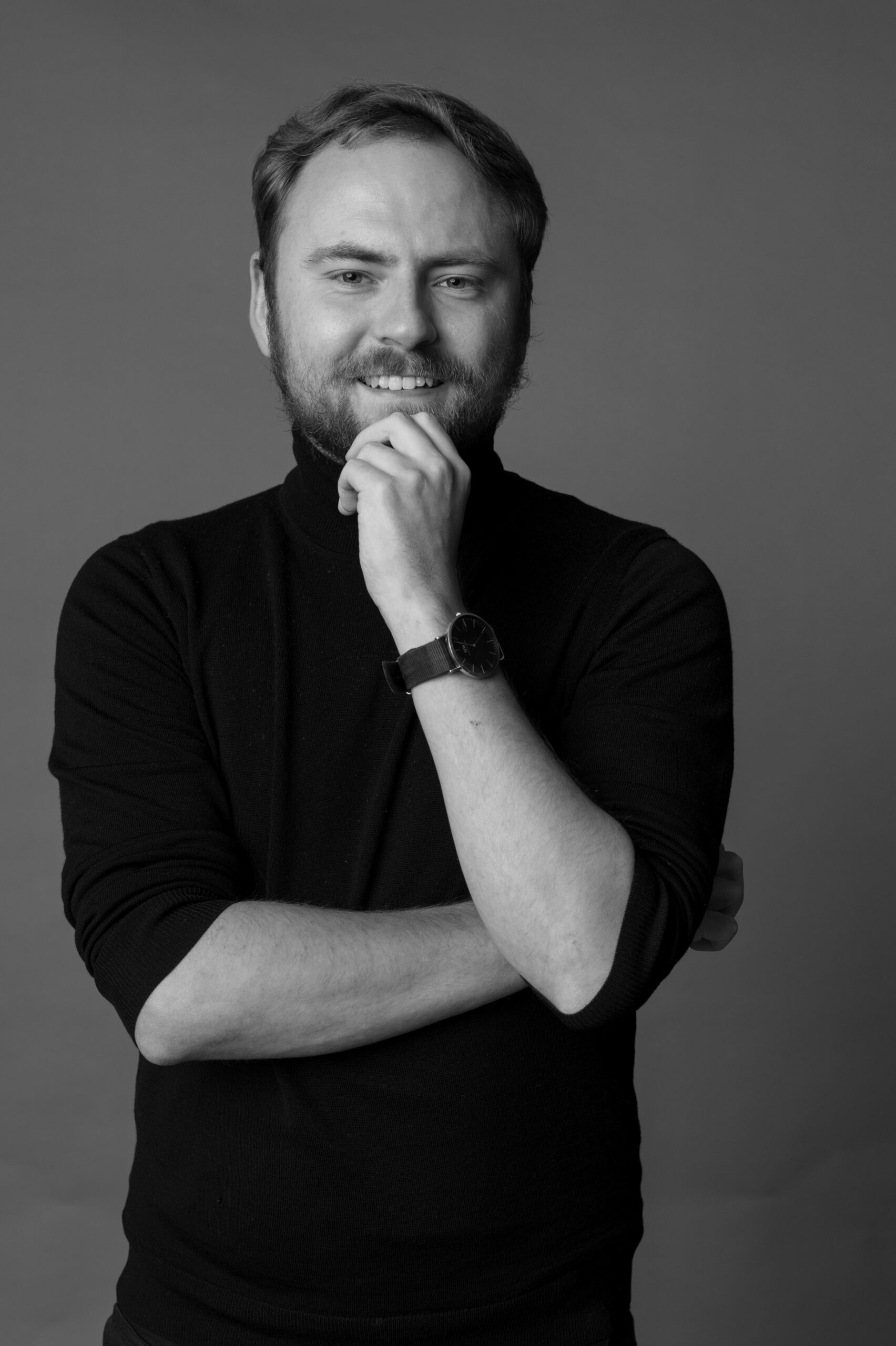
Philipp Sauter ist wissenschaftlicher Mitarbeiter am MPIL.
Philipp Sauter is a Research Fellow at the MPIL.

